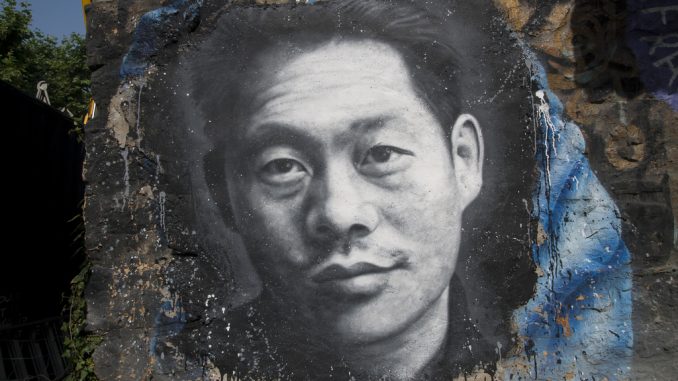
Like any form of history, art history tends to focus on Western parts of the world. It is only when we choose to go beyond this status quo that we expand our consciousness of the art world.
On Thursday, Oct. 20 at 7 p.m. in Lecture Center room 104, the Art History Association (AHA) hosted their fall speaker, Curator of Modern and Contemporary Art at the Asia Society Dr. Michelle Yun. Yun presented a talk entitled “Zao Wou-Ki and the Avant-Garde” on the Chinese-French postwar modernist whoM the Asia Society is currently displaying a retrospective on.
“There were a lot of contributions to the development of modernism from non-Western artists and cultures,” Yun said.
According to co-president of AHA and second-year art history major Elizabeth Dragan, the organization exhibits a lecture each semester. Yun’s address coincided with the Art History Department’s yearlong celebration of Dr. Hugo Munsterberg, the founder of the department. Munsterberg found the study of Asian and African art to be a necessary part of the program.
Dragan said that once they decided on this concept of dedicating the fall event to Asian art and the spring to African they then researched local figures. The association obtained a group of around five different professionals, but ultimately decided on Yun and her knowledge of Zao.
“We found Michelle’s work to be the most interesting, and pursuing what our club members want to learn more about is one of our goals,” Dragan said.
The evening commenced with introductions and a brief reception beforehand where guests got acclimated and perused a table laden with a fruit and pastry dessert spread. Yun then took to the podium and mentioned that the talk would focus on Zao’s practice, showing pieces along the way.
“Zao was one of the first international superstars of the modern era,” Yun proclaimed.
She proceeded to take us through the Chinese-French painter’s career and his relationship to the Avant-Garde. Born in Beijing in 1920, Zao grew up in a wealthy family that exposed him to a worldly environment. He learned English early on and began his established artistic training at 15. From this young age he possessed a duality of reverence for the past and Western pursuits.
In 1948, Zao expatriated to Paris, but wouldn’t return to the mainland of China until 1983. His influences included Chagall, Matisse, Picasso and Cezanne. Yet, in the late ‘40s he began playing with Asian aesthetics.
“If the influence of Paris in my artistic formation is undeniable, I must also say that I have gradually rediscovered China, along with my growing confidence,” Zao once said.
According to the Asia Society’s website throughout Zao’s lengthy career he dabbled with oil on canvas, ink on paper, lithography, engraving and watercolor.
Third-year student and AHA treasurer Rebecca DuBois attended the event and viewed it as a refreshing break from the Western artists she is usually bombarded with. A double major in art history and Spanish, DuBois is only required to enlist in one non-European art course. She is interested in learning more about other cultures’ impact on art.
“Living in a Western society, it’s mostly focused in Western art,” she said.
The Asia Society’s exhibit “No Limits: Zao Wou-Ki” will last until Jan. 8. A symposium considering Zao and other diasporic East Asian artists’ influences on 20th century art is set for Nov. 18 from 2:30 until 6 p.m. It is the closing event of Asia Contemporary Art Week in their Manhattan location.
